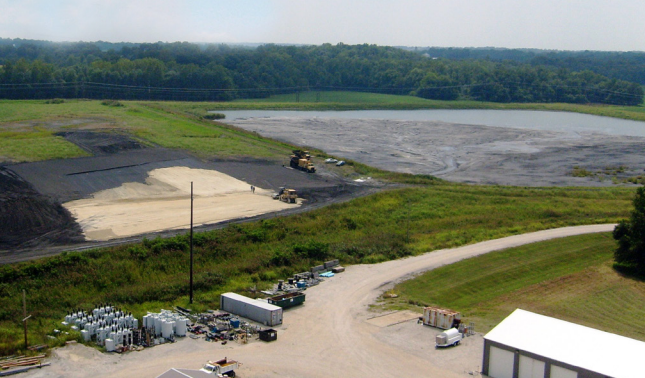
Ratts Generating Station
Tensar Geogrids stabilize subgrades to create a stable lay-down area for new storing and unloading system.
- Owner: Hoosier Energy
- Design Engineer: Burns & McDonnell
Hoosier Energy needed to stage materials for a new fly ash handling, storing and unloading system at its Frank E. Ratts Generating Station. Burns & McDonnell, the energy cooperative’s project engineers, suggested using geogrid stabilization to create a stable and weather resistant lay-down area near the construction zone.
Location and performance were significant project drivers. To optimize productivity on the project, the customer wanted to locate the lay-down area as close to the construction site as possible. It was also essential that the area remain usable even during wet weather. The proposed lay-down area had been used for fly ash disposal. This byproduct of coal combustion is commonly used as structural fill, but it can become extremely soft when exposed to moisture. The proposed lay-down area was underlain with fly ash deposits up to 30 ft in depth.
Burns & McDonnell recommended using the Tensar geogrids to stabilize the subgrade in the lay-down area. This approach provided an affordable solution that could be installed very close to the construction zone while delivering performance that was equivalent to a traditional thick-base strategy. Stabilizing with Tensar geogrids provided the strong construction platform that was essential for transporting and assembling the project’s heaviest components. “We could have just put down a really thick layer of rock,” says Burns & McDonnell Senior Civil Engineer Dave Kunstel.
“But we knew they would be a lot better off using less rock along with geogrid to stabilize the subgrade. That was our recommendation based on experience.” Rode Construction built the lay-down by leveling and rolling the subgrade and covering it with a 24-inch-thick base layer of bottom ash, which is another non-combustible coal constituent. After the base layer was leveled and rolled, it was covered longitudinally with Tensar geogrids sourced from Erosion Resources and Supply, Inc. An 8-in. layer of crushed limestone was then installed and compacted.



